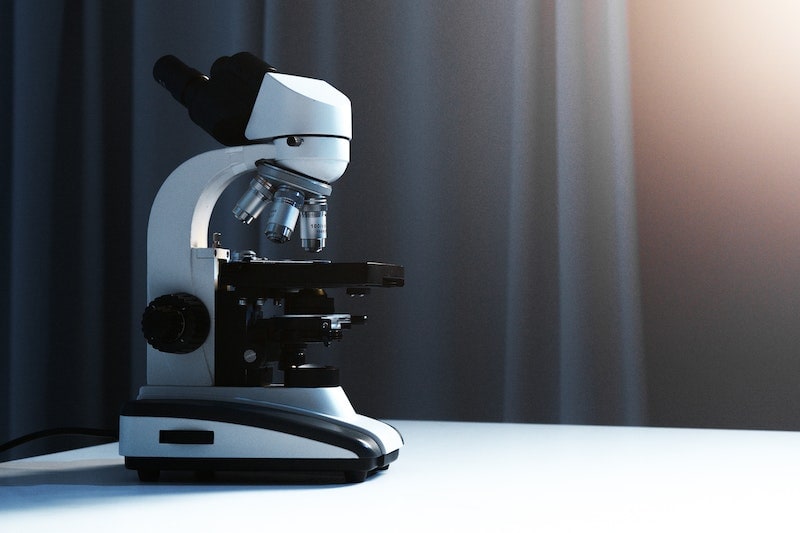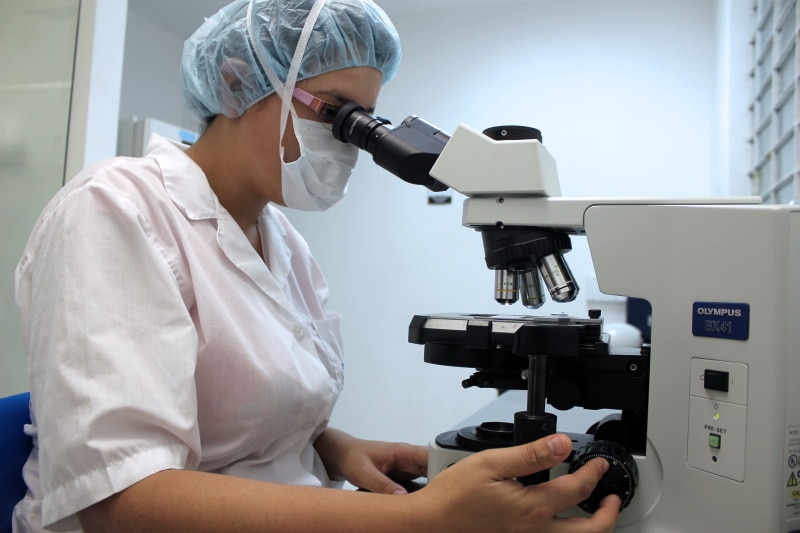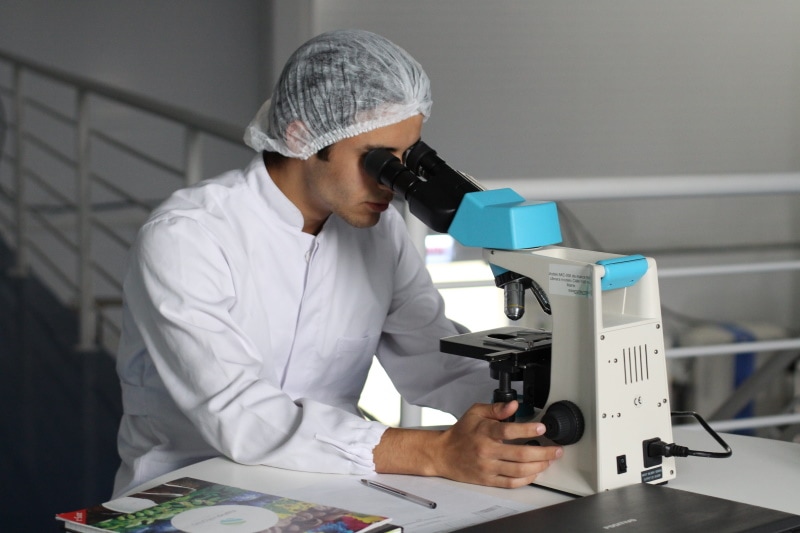How to Focus a Microscope: 9 Simple Steps
Last Updated on

While microscopes are a great tool to reveal the microscopic world or to view objects in much closer detail, you may not know how to focus one.
The good news is that it’s not too hard to get a microscope in focus. Use this guide, and you’ll be able to see the object in the viewfinder in crystal-clear focus in no time!

The 9 Steps to Focus a Microscope
While there are many steps here, we promise that the overall process is quick and easy!
1. Find the Right Location
Getting a clear view of the object under your microscope starts with finding the right location to set up your microscope. You need a level surface, preferably one with access to plenty of light.
The surface should also be sturdy so it doesn’t move around if you bump up against it.
2. Turn the Light On
If your microscope has a light, turn it on before trying to focus anything. Having the light on will make it much easier to see what you’re doing and get the focus right.

3. Start With Low Magnification
You might want to see something with a high magnification, but it’s much harder to set everything up at higher levels. Start with lower magnification levels and work your way up. This way, you know that the object is right where you want it in the viewfinder and that you’re focusing on the right thing.
4. Line Up the Slide
You won’t have the object in focus yet, but line up the slide as best as you can. You should be able to see a bit of movement if you look into the viewfinder. You don’t need to have it perfect, but you should get it as close to the center as you can.
5. Adjust the Coarse Adjustment Knob

Once you have it roughly lined up, use the large coarse adjustment knob to make your initial adjustments. Get it as close as possible to focus using nothing but this knob before moving on to the next step.
6. Fine-Tune the Focus
Now that the focus is close to what you want, it’s time to use the small knob in the middle of the coarse adjustment knob. This enables you to get the image sharp and crisp and in perfect focus.
7. Adjust the Stage
If you need to move the object closer or farther away from the microscope, now is the time to do it. Use the knobs on your microscope to lower or raise the stage as necessary.
8. Move Up the Magnification
Now that you have the perfect image, it’s time to move up the magnification if you want! Don’t make huge adjustments to the magnification here; just move it up one or two levels. The image won’t be clear anymore, but you’re in better shape to make the necessary adjustments to get the image that you want.

9. Repeat Steps 4 to 7
To get the object in focus at a higher magnification, it’s time to head back to step four. You must make the adjustments again to get everything clear. It takes practice to get your microscope in perfect focus!

Conclusion
Now that you know how to focus your microscope, you can take a look at whatever you want under the viewfinder!
Just know that while it might take a bit of time to get things in focus now, before long, you’ll be able to do it in no time. It’s all about practice, so pull out that microscope and start looking at things!
Featured Image Credit: Artem Podrez, Pexels
About the Author Robert Sparks
Robert’s obsession with all things optical started early in life, when his optician father would bring home prototypes for Robert to play with. Nowadays, Robert is dedicated to helping others find the right optics for their needs. His hobbies include astronomy, astrophysics, and model building. Originally from Newark, NJ, he resides in Santa Fe, New Mexico, where the nighttime skies are filled with glittering stars.
Related Articles:
How to Collimate Binoculars: 9 Expert Tips
How to Clean a Refractor Telescope: Step-by-Step Guide
How to Clean a Telescope Eyepiece: Step-by-Step Guide
How to Clean a Rifle Scope: 8 Expert Tips
Monocular vs Telescope: Differences Explained (With Pictures)
What Is a Monocular Used For? 8 Common Functions
How to Clean a Telescope Mirror: 8 Expert Tips
Brightfield vs Phase Contrast Microscopy: The Differences Explained
